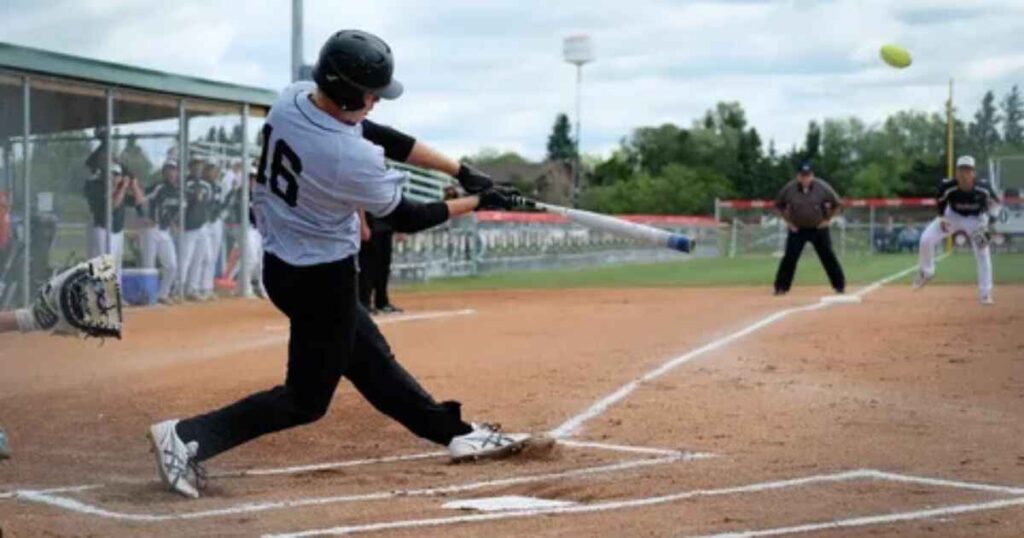Softball is a dynamic and intricate sport, with various positions and specialized terminology that may seem perplexing to those new to the game. One such term is the DP in softball, short for “Designated Player”.
In this comprehensive guide, we’ll explore the DP position, its role, rules, and its significance within the realm of softball. Let’s dive into the world of DP in softball and unravel its nuances.
Understanding the DP Position
The DP in softball, or Designated Player, is a unique position in the game, distinct from other roles like pitchers, catchers, infielders, and outfielders. While not every player on a softball team will assume the DP position, it plays a pivotal role in offensive strategies and the flow of the game.
The Role of the DP
The DP’s primary role revolves around batting. This player is often one of the most potent hitters on the team, responsible for delivering powerful and consistent performances at the plate.
The DP is typically selected based on their batting prowess, contributing significantly to the team’s offensive strategy. This role allows teams to maximize their offensive potential by strategically utilizing their best hitters.
How the DP Position Works
In softball, the DP occupies a unique spot in the batting order, usually listed as the tenth player in the lineup. This substitution is known as a “flex” or “flex/DP” arrangement, which provides a degree of flexibility to teams. Softball is a sport that demands versatility and adaptability, much like the DP’s role on the field.
This makes softball harder than baseball, as players need to master various positions and roles to excel in the game while navigating the intricacies of the “flex” system.
The Flex/DP Arrangement

The Flex/DP arrangement is a fundamental aspect of how the DP position functions. In this setup, there are two key players involved: the DP and the Flex player. The Flex player is typically a defensive player who may not have strong batting skills but is essential for their contributions in the field.
Key Aspects of the Flex/DP Arrangement
The DP Bats for the Flex:When the DP is at bat, they hit in place of the Flex player, ensuring that the team’s best hitter is consistently in the lineup.
The Flex Plays Defense:The Flex player takes on defensive responsibilities for the team, making plays in the field.
The DP Remains Specialized: While the DP primarily bats, they do not participate defensively. This specialization allows the DP to focus entirely on their role as a hitter.
Advantages of the DP Position
The DP position brings several advantages to a softball team, including:
Enhanced Offense: The DP’s role significantly strengthens a team’s offense. They are typically a reliable hitter, contributing to runs and scoring opportunities.
Strategic Flexibility: The Flex/DP arrangement provides tactical flexibility. Teams can optimize both their batting and defensive lineups, adapting to game situations.
Balanced Roster: The DP position allows teams to balance their roster with a mix of defensive specialists and potent hitters.
Offensive Consistency: With the DP as a designated hitter, teams can maintain a powerful hitter in the lineup, ensuring offensive consistency.
what is a dp/flex rule in softball
Understanding the rules and regulations related to the DP position is vital for both players and coaches. Some key rules to consider include:
DP and Flex Listed: Both the DP and Flex players must be designated in the starting lineup, typically indicated as “DP” and “Flex.”
Batting Substitution: The DP may bat for any defensive player in the lineup. When this substitution occurs, the Flex player takes over the defensive position of the player for whom the DP is batting.
The DP Stays in the Same Spot: The DP retains their batting position throughout the game. They continue to bat in the same spot in the lineup regardless of the defensive player they are batting for.
No Defensive Participation: The DP is not permitted to participate in defensive plays, including fielding, pitching, or catching. Their role is exclusively as a designated hitter.
Consecutive Batting: The DP may bat in consecutive at-bats in some variations of the rules. This allows the team to maximize the DP’s offensive potential.
The DP in Action
Let’s explore the DP position in action with an example scenario:
| Batting Order | Player Position |
| Leadoff batter | Defensive player |
| Second batter | Defensive player |
| Third batter | Defensive player |
| Fourth batter | Defensive player |
| Fifth batter | Defensive player |
| Sixth batter | Defensive player |
| Seventh batter | Defensive player |
| Eighth batter | Defensive player |
| Ninth batter | Defensive player |
| Tenth batter | DP (Designated Player) |
In this scenario, the DP is listed as the tenth batter. When the DP in softball turn comes up to bat, they substitute for one of the defensive players, often the weakest hitter in the lineup. The Flex player takes over the defensive responsibilities for that player.
Variations in Rules
It’s essential to note that softball rules can vary based on factors such as age group, league, and governing bodies. Some
variations exist in how the DP position operates and its rules. It’s crucial to understand and adhere to the specific rules applicable to the game you are playing.
Frequently Asked Questions(FAQs)
Can the DP play defensively in some situations?
No, the DP’s role is exclusively as a designated hitter. They are not allowed to participate in any defensive plays.
Can the DP be used as a pinch-runner for a defensive player?
Yes, in some variations of the rules, the DP can be used as a pinch-runner for a defensive player without affecting their role as a hitter.
How is the Flex player determined?
The Flex player is typically a player who excels in defensive roles but may not have the same offensive capabilities as the DP. Coaches strategically choose the Flex player based on their skills.
What does DP position mean in baseball?
The DP position, often referred to as the “Designated Player,” is a term specific to softball, not baseball. In baseball, there is a designated hitter (DH) who bats in place of the pitcher but doesn’t have the same role as the DP in softball.
What is a dp in softball youth?
In youth softball, a DP, which stands for Designated Player, is a specialized position that allows a player to bat for another player in the lineup without participating in defensive plays.
Conclusion
The DP position in softball, short for Designated Player, brings a unique dimension to the game. It empowers teams to optimize their offensive potential while maintaining a balanced defensive lineup. Understanding the rules and nuances of the DP position is crucial for players, coaches, and enthusiasts of the sport.
In summary, the DP in softball represents a strategic approach to achieving the best of both worlds: powerful hitting and strong defense. It is a testament to the sport’s adaptability and depth, ensuring that softball remains a thrilling and dynamic game for players and fans alike.








